In this article, you will learn the different types of flanges, and their applications explained with pictures.
Also, you can download the PDF file at the end of this article.
What is a Flange?
Flanges are devices used to connect pipes, valves, pumps, fittings, and other equipment such as filters and pressure vessels. It is usually welded or threaded, and the two flanges are joined together by bolting them with gaskets to provide a seal, providing easy access to the piping system.
The flange can withstand high pressure and temperature, so they have different pressure and temperature ratings for different materials. In a piping application, the type of flange to be used depends largely on the strength requirements.
Many different flange standards are found worldwide to allow easy functionality and interchangeability. Common standards include ASA/ASME (USA), PN/DIN (European), BS10 (British/Australian), and JIS/KS (Japanese/Korean).
Flanges come in many different shapes and sizes and are used in a wide range of industries around the world. With so many varieties and specifications, it may not be easy to identify which one is right for your needs.
Here is a simple guide to the most common and popular types of flanges and their uses.
Read Also: 16 Types of Measuring Tools and Their Application
Types of Flanges
The following are the most common types of flanges:
#1 Weld Neck Flange
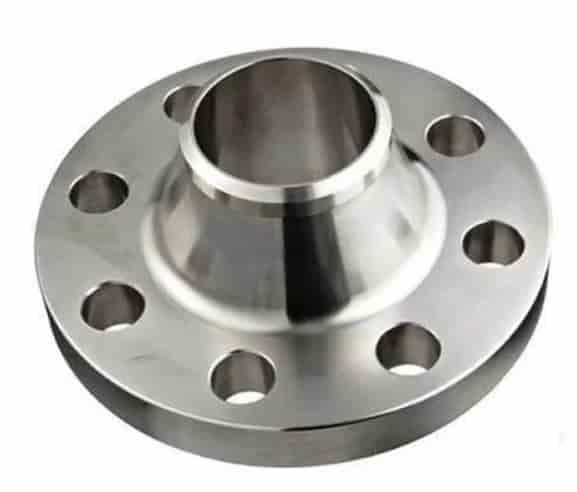
This type of flange consists of a long tapered hub. Usually machined from a forging, these flanges are welded to a pipe. Flanges with weld necks are great for applications when there is a requirement for a continuous flow of fluid through the piping system.
These flanges are commonly used in high-pressure and high/low-temperature applications. There are two types of welding neck flanges: a regular type for use with pipes and an elongated type for use in process plants.
By preventing pressure drops, turbulence, and erosion/corrosion of metals near flanged joints are prevented.
#2 Long Welding Neck Flange
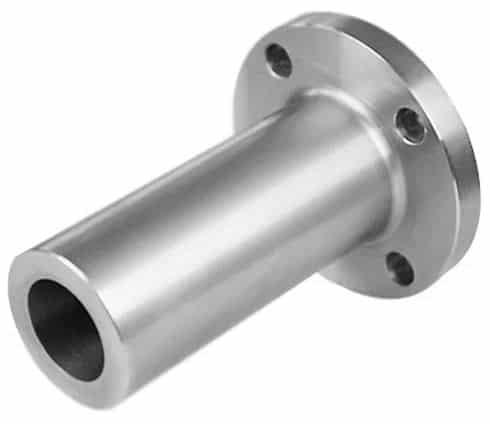
These flanges are similar to weld neck flanges, except that the neck is extended and acts like a boring extension. Long Weld Neck Flanges are designed to be used in place of weld neck flanges and pipe pieces for bolt-up connections to ships, columns, or barrels.
This design reduces stress on the neck and transfers it to the base, which attaches to the vessel. These are generally used to connect large networks of pipes as they can withstand high pressures. Heavy barrel (HB) and equal barrel (E) are two common types of these flanges.
#3 Slip-on Flange
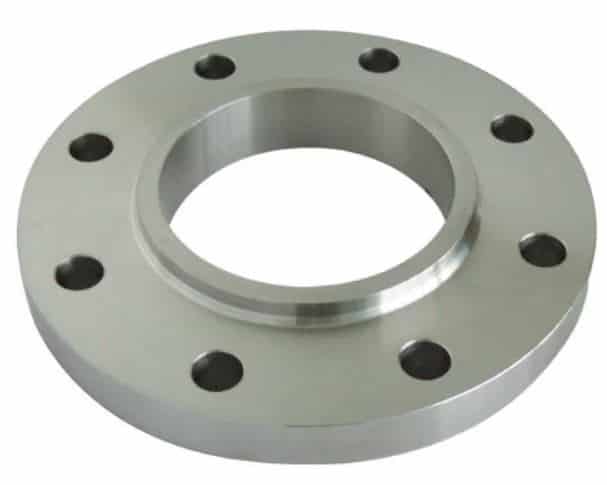
These types of flanges are connected to the pipe and welded inside and outside. Slip-on flanges have a larger bore size than the outside diameter of the pipe to be connected, as the pipe must slide inside the flange to be welded.
These flanges are also referred to as “hubbed flanges” because their slim and compact shape makes them easy to identify. It is mainly used for liquids with low pressure or low risk of leakage. Apart from their application, the slip-on flange is much cheaper and quite popular among other types.
Read Also: Types of Metals: Their Properties and Uses [Explained]
#4 Threaded Flange
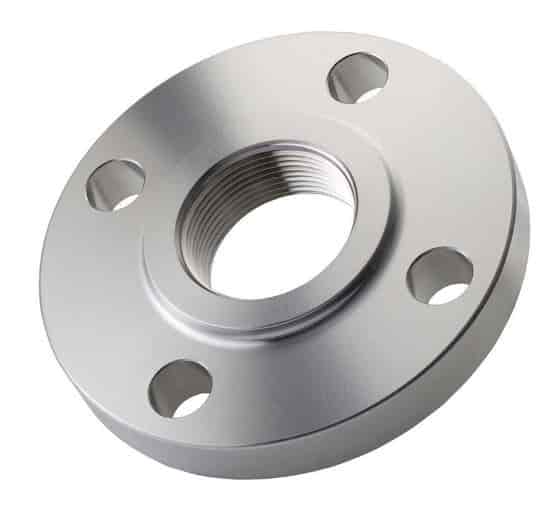
Threaded flanges are similar in design to slip-on flanges, the only difference being that they have a tapered thread. This design allows it to be attached to the pipe without welding. It has threads inside the flange bore that are fitted with matching male threads on the pipe or fitting.
The best application for them is in low-pressure, low-temperature environments, like slip-on flanges. These are available in sizes up to 4 inches and in several pressure ratings. However, they are used in smaller pipes such as water and air utility services.
Also, these flange requirements apply to explosive environments like gas stations and plants, where welding connections would be harmful.
#5 Socket Weld Flange
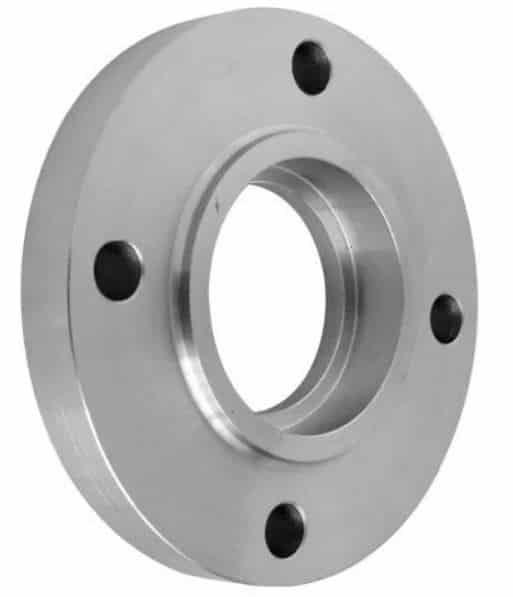
Socket weld flanges are joined to the pipe using a single fillet weld held outside the flange. These flanges are typically used on small high-pressure pipes that do not transfer highly corrosive fluids.
This is because these flange types tend to corrode in the gap between the pipe end and the socket shoulder. It is not often used for critical services.
In this flange, the static strength is comparable to that of slip-on flanges, but the fatigue strength is 50% higher than that of double-welded slip-on flanges.
#6 Lap Joint Flange
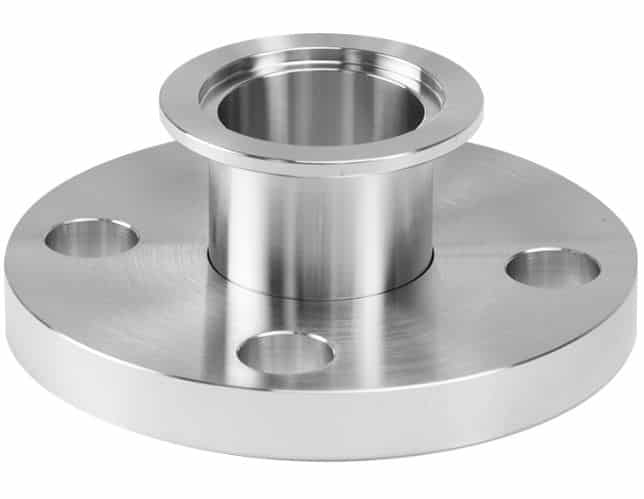
Lap joint flanges have a flat face and are always used with a stub end. These flanges resemble slip-on flanges in shape, except for the radius at the crossing of the flange face and the bore to adjust the flanged portion of the stub end.
A lap joint flange slips over the pipe and seats behind the stub end, and the two are held together by bolt pressure. These flanges have freedom of movement around the pipe, facilitating opposing flange bolt holes. For stainless steel or nickel alloy pipelines, lap joint flanges are a cost-effective solution since the lap joint flange material can be of a lower grade.
Read Also: Mechanical Properties That Every Mechanical Engg Should Know
#7 Blind Flange
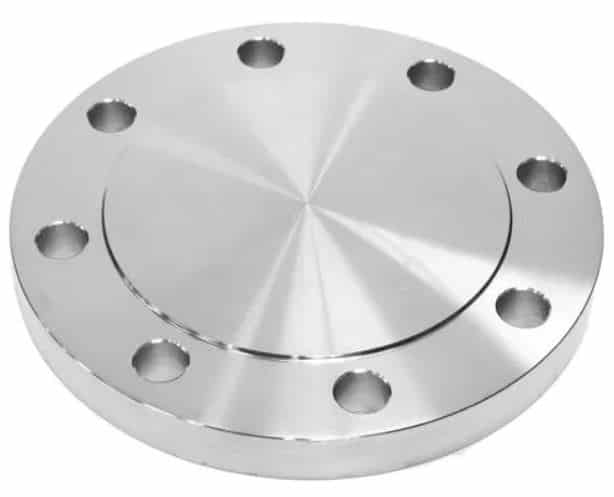
A blind flange is a type of flange that has no bore center and is used to terminate or close the end of a piping system. These flanges are subjected to significant mechanical stress due to system pressure and the required bolting forces.
Because of this, they are suitable for high-pressure applications and testing the flow of a gas or liquid through pipes. A blind flange allows easy access to the pipeline since it can be easily unbolted by the operator to perform activities inside the terminal end. They can also seal a nozzle opening on a pressure vessel.
Special Types of Flanges
Special types of flanges are uncommon. A few of these are explained below.
#1 Orifice Flange
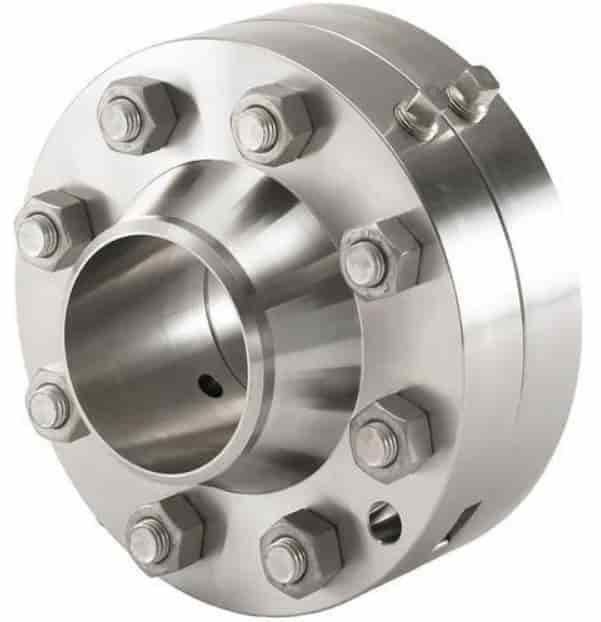
Orifice flanges are used with orifice plates to measure or restrict the pressure or flow of gases and liquids in pipelines. They are found with an additional set of bolts called jack screws. They are often available with a plate and jack screw, allowing complete product.
An orifice flange’s primary function is to measure fluid or gas flow rate through a piping system. In these flanges, a hole is drilled through the face perpendicular to the pipe, making them easy to identify.
#2 Nipoflange
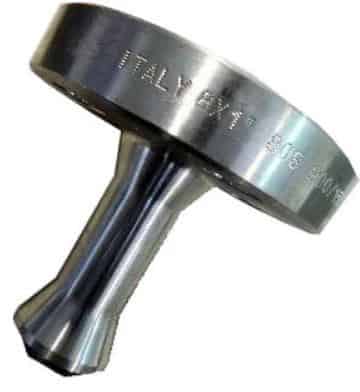
This flange is a combination of a welding neck flange and a weldolet or nipolet. However, it is a solid piece of forged steel flange, not two separate products welded together.
Nickel flanges are available in several different materials, including carbon steel ASTM A105 (high-temperature), stainless steel ASTM A182, and nickel alloys. These are used to branch pipelines at 90 degrees.
They are also fabricated in a reinforced version, which holds additional mechanical strength compared to the standard flange.
Read Also: Different Types of Gears: Their Working and Applications
#3 Swivel Flange
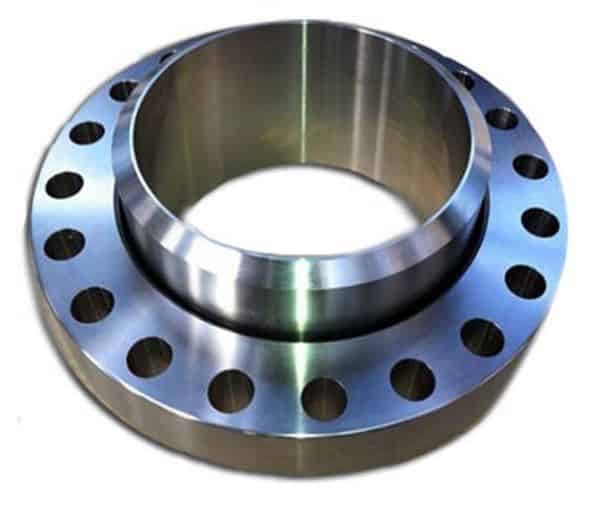
The swivel ring flange allows bolt holes to be aligned between two mating flanges, which is important for wide-diameter pipelines, subsea and offshore pipelines, as well as shallow-water pipe works.
These types of flanges are suitable for oil, gas, hydrocarbon, water, chemical, and other fluids in petrochemical and water-handling applications. This flange is ideal for offshore or subsea pipeline operations, allowing divers to more quickly and easily adjust bolt holes.
A swivel flange is available in all standard shapes, e.g. weld-neck, slip-on, lap-joint, socket weld, etc., and in all material grades.
#4 Expanding Flange
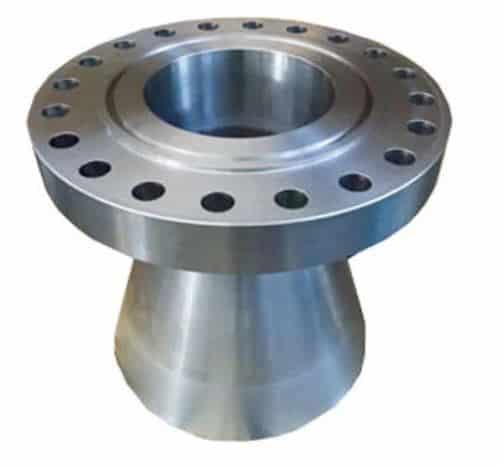
The purpose of expanding flanges is to increase the bore of a pipeline from one point to another or to connect pipes with other mechanical devices such as pumps and compressors. It is a type of welding neck flange that has a larger bore on the non-flange end.
It is not possible to increase pipe bores by more than two sizes with expanding flanges. The extended flange is compact and saves space compared to the reducer-welding neck flange. It only requires a butt-weld to install, which is very cost-effective and competitively priced.
#5 Reducing Flange
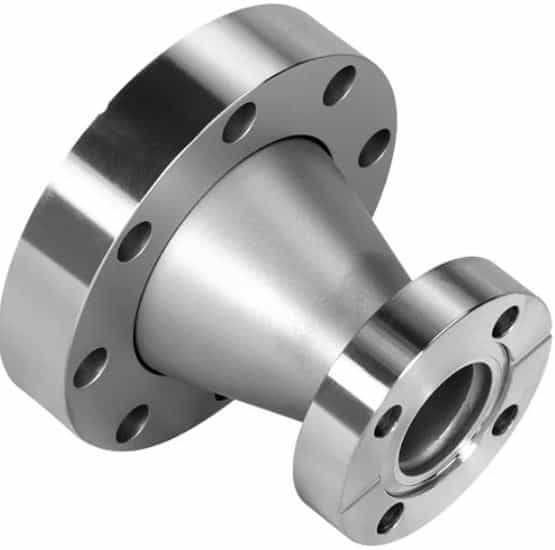
As the name suggests, the reducing flange is used to reduce the diameter of the pipe. These flanges are used where pipe installation space is limited. These are available in various sizes and material grades and are usually unavailable from stock.
An advantage of using a reducing flange is that the piping can be assembled without welding. Reducing flanges are easy to bolt on, provide a simple solution, and are most cost-effective. This allows for the same considerations in terms of specifications, sizes, and material grades as the expansion flange.
Read Also: Types of Furnaces: Their Working & Applications
#6 Elbow Flange
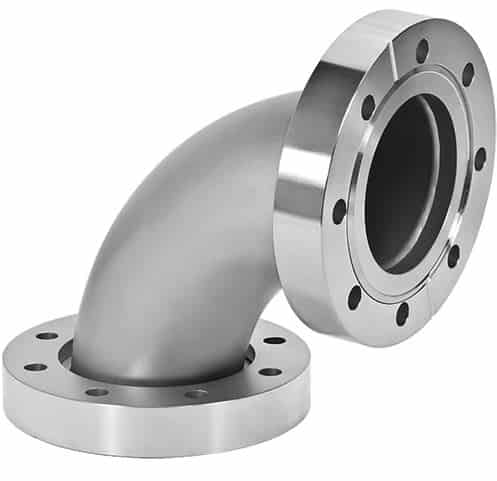
An Elbow flange is widely used for piping connections that require compact pipe routing. The flanged elbow is used as a fitting. In contrast, flanged bends are made by welding a flange directly to a piping elbow (weld neck or any other type).
Compared to carbon steel elbow flange, stainless steel elbow flange will not erode, pitting, or rust. A stainless steel elbow fitting has a smooth inner wall that prevents impurities from condensing.
Read Also: Types of Dies and Their Applications in Manufacturing
Closing It Up
I hope I have covered everything about the “Types of Flanges.” If I missed something, or if you have any doubts, let me know in the comments. If you liked this article, please share it with your friends.
Want free PDFs direct to your inbox? Then subscribe to our newsletter.
Download PDF of this article:
You might like to read more in our blog:
Fascinating rundown on flanges. Definitely learned more than I was expecting. Considering I was just looking into the purpose for what you call “cast flanges” because I’ve only ever seen them used to make railings out of schedule 40 iron pipe. Hahaha. Right now I’m using one as a hilt on a apocalypse style short sword, just for funsies, that I made with a 7 inch 3/4 bolt and some 3/16 flat stock sheet metal. Aside from an anchor for railings, or the occasional ceiling mount for a similar purpose for steam pipe, I have never seen the practical purpose for them. I appreciate your article. Beyond basic enough to be useful, but brief enough to be an interesting quick read.
Thanks for the positive feedback! We’re glad our article was informative and provided more insight on flanges than you were expecting.